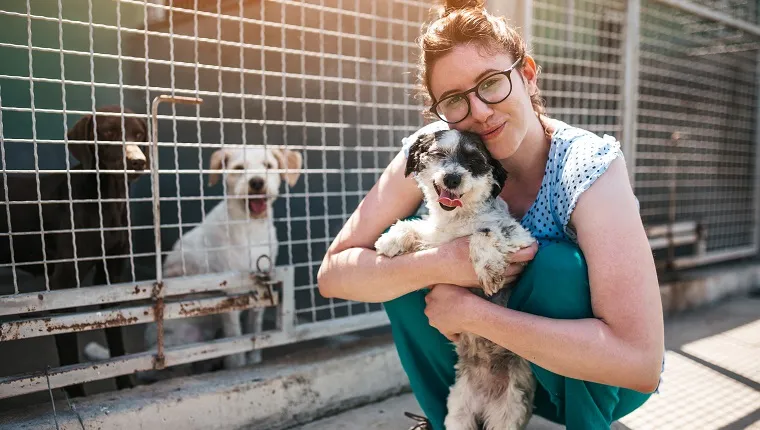
Dog Behavior After Adoption: What Health-conscious Pet Owners Should Know
Share
Adopting a dog is a noble and heartwarming decision. However, it's crucial to be prepared for the changes in dog behavior after adoption, especially if you're a health-conscious pet owner. Dogs, just like humans, have unique personalities and past experiences that influence their behavior in their new homes. Understanding these behaviors is vital for a smooth transition, ensuring a happy and healthy relationship with your new furry friend.

Initial Adjustment Period
The first few weeks after bringing a new dog home can be a whirlwind of emotions for both the pet and the owner. This period is known as the adjustment phase. During this time, your dog is likely to exhibit behaviors that might seem unusual or unexpected. It's essential to approach these behaviors with patience and understanding, as they are often temporary and part of the adaptation process. To learn more about how long the adjustment phase typically lasts, you can check out how long does it take for a dog to adjust.
Common Behavioral Changes
Upon adoption, dogs may display a range of behaviors as they acclimate to their new environment. Some common behaviors include:
- Shyness or Fearfulness: It's not uncommon for newly adopted dogs to be shy or fearful. They might hide or avoid interaction as they assess their new surroundings. This behavior often stems from unfamiliarity with the new environment and uncertainties about their safety.
- Excessive Barking: Some dogs might bark excessively when they are first adopted. This behavior could be due to anxiety, excitement, or a way to communicate their needs or discomfort.
- Chewing and Destructiveness: Anxiety or boredom can lead to destructive behavior, such as chewing on furniture or personal items. Providing appropriate chew toys and engaging in regular play can help mitigate this issue.
Creating a Safe and Healthy Environment
Health-conscious pet owners are particularly concerned with the well-being of their dogs. Creating a safe and nurturing environment is crucial for helping your dog adjust smoothly. Here are some tips:
Establish a Routine
Dogs thrive on routine. Establishing a consistent daily schedule for meals, walks, and playtime can provide your dog with a sense of stability and security. This routine helps reduce anxiety and fosters a sense of trust between you and your pet.
Provide Proper Nutrition
Proper nutrition is vital for your dog's health, especially during the transition period. Ensure that you're providing high-quality dog food that meets their dietary needs. Consult with a veterinarian to determine the best diet for your dog's age, size, and health status. For more insights into caring for your pet's health, visit how to repair a damaged collar.
Building a Strong Bond
Building a strong, trusting bond with your newly adopted dog is essential for their emotional and physical well-being. Spend quality time with your dog through play, training, and gentle interactions. Positive reinforcement techniques, such as treats and praise, can be very effective in encouraging desired behaviors and strengthening your bond.
Socialization and Training
Proper socialization is key to helping your dog become well-adjusted and confident. Introduce your dog to different environments, people, and other animals gradually and positively. Enroll in a basic obedience class to teach your dog essential commands and improve their behavior. For more tips on adoption and adjustment, check out dog adoption application tips.
Seeking Professional Help
If your dog continues to struggle with behavioral issues despite your best efforts, it may be necessary to seek professional help. Animal behaviorists and trainers can provide valuable insights and personalized strategies to address specific challenges. They can also help identify any underlying medical issues that may be contributing to behavioral problems.
For more information on the adoption process and resources, visit how adoption works.
Conclusion
Understanding dog behavior after adoption is crucial for health-conscious pet owners who want to ensure their furry friends lead happy, healthy lives. By being patient, creating a nurturing environment, and investing in training and socialization, you can help your dog transition smoothly into their new home. Remember, every dog is unique and may require different approaches, but with love and dedication, you'll build a strong bond with your new companion.

FAQs
How long does it take for a dog to adjust to a new home?
The adjustment period can vary depending on the dog's personality and past experiences. It can take anywhere from a few weeks to several months for a dog to feel completely comfortable in their new home.
What should I do if my newly adopted dog is aggressive?
If your dog displays aggression, it's important to consult with a professional trainer or animal behaviorist. They can help identify the root cause of the aggression and develop a plan to address it safely.
How can I help my dog overcome separation anxiety?
Gradually desensitizing your dog to your departures and arrivals, providing interactive toys, and creating a comforting environment can help reduce separation anxiety. In severe cases, consulting a veterinarian or behaviorist may be necessary.
This article contains affiliate links. We may earn a commission at no extra cost to you.
